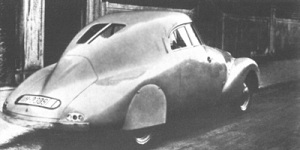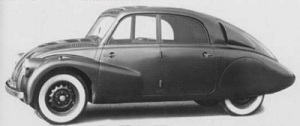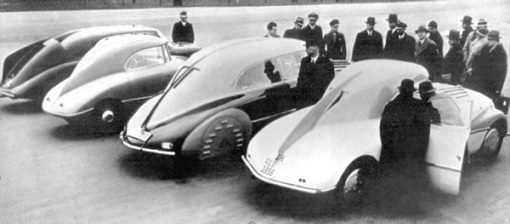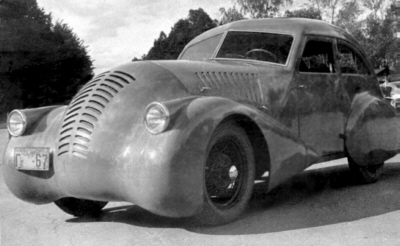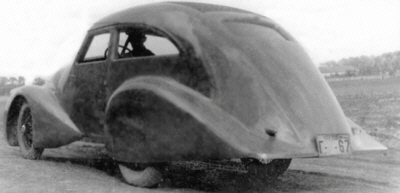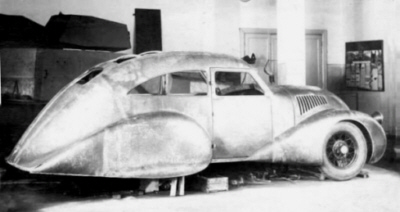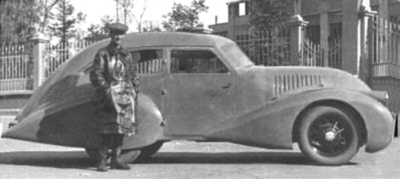Streamlining The introduction of streamlined design elements into automobile design marked the evolution of the automobile from the earlier 'carriage design' to the modern integrated design approach, more like we have today. Millions of Ford Model T's were produced, along with similarly structured cars from Chevrolet, Pontiac, Hudson, Nash, Chrysler, Dodge, Oldsmobile, and a whole litany of other manufacturers. But these all has the same basic premise, a separate wooden body (sometimes quite large and ornate) on a mechanical chassis. Streamlined design moved beyond that, but was not just about swooping metal shapes applied to the body, it also made use of new design techniques for fabrication, including the first attempts at unibody construction. It was both more, and less efficient, depending on your viewpoint. The cars were still heavy, lumbering vehicles, and all that sheet metal added more weight. But it did bring some efficiency at highway speeds. Streamline design in and of itself was not responsible for all future developments structural and mechanical, but the appearance of these other advancements both enabled and accompanied, streamline design. Cars became larger, heavier, better performing, with larger engines and transmissions. As an historical reference, streamlining can be identified as a major turning point in automobile design. As early as 1931 serious thought was being given for using streamline design to implement aerodynamic efficiencies to lessen the amount of energy required to move the car through the air, therefore reduce fuel consumption, or increase performance from the same amount of energy expended, or both.
Aerodynamic styling had been prominent on auto racing prior to this, but those cars were one of a kind, handbuilt vehicles, which could never be cost effective to build for the mass market. But the benefits of streamlining were clear.
This diagram from a 1931 issue of Everyday Science and Mechanics proposed a possible British design incorporating streamlined design to make 80 mph with 80 horsepower, while carrying seven passengers.
|
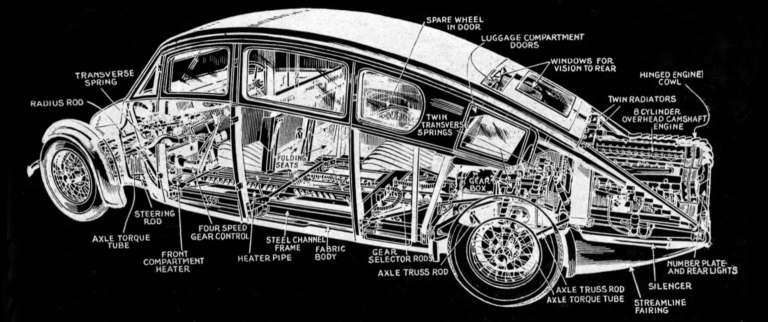
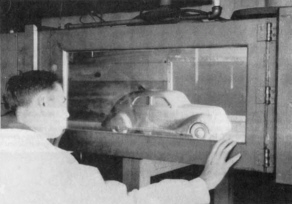
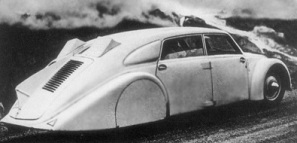
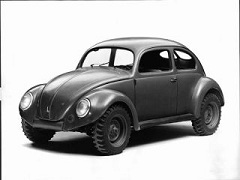
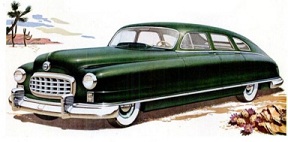
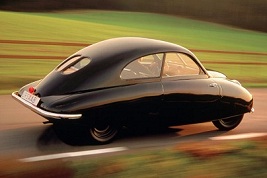 1949 Saab 92
cD = 0.35
1949 Saab 92
cD = 0.35
